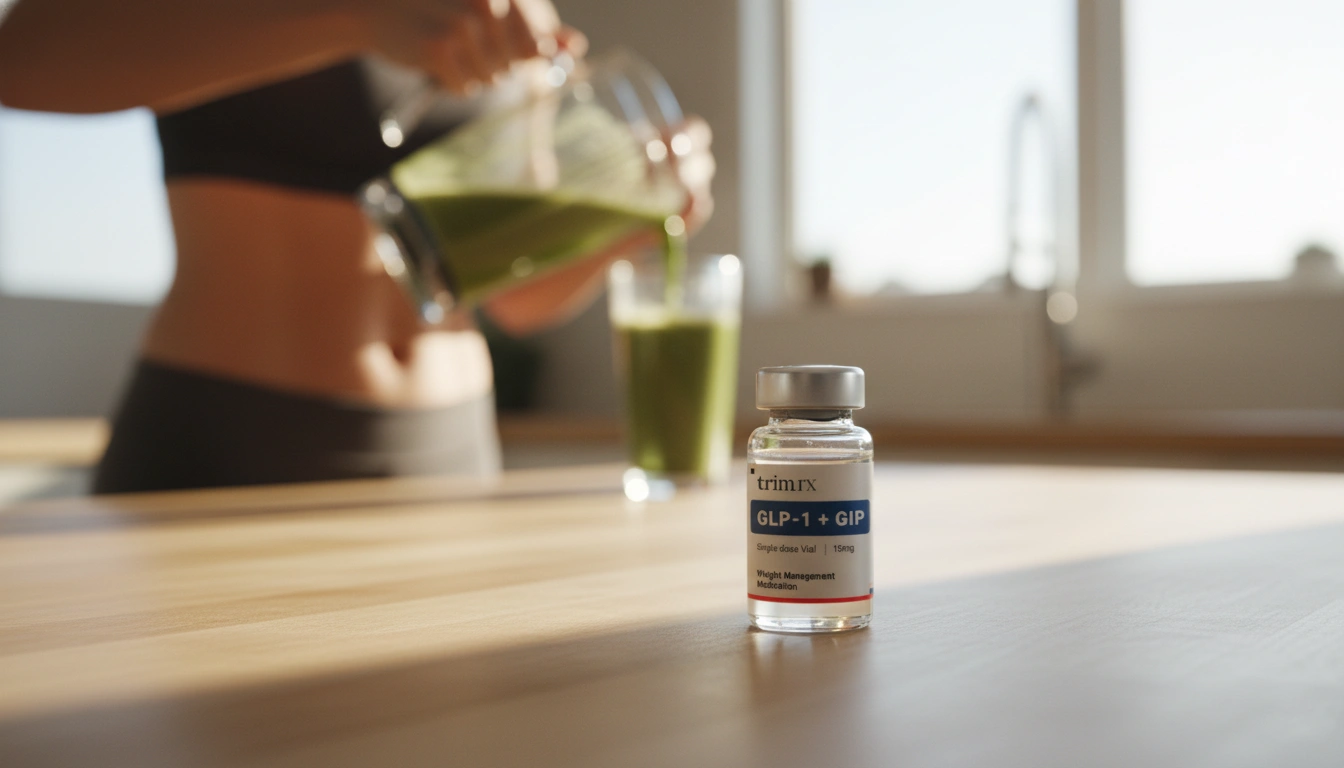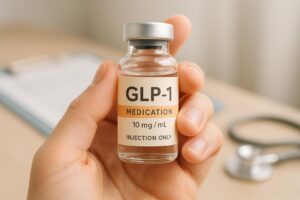How to Inject GLP-1: A Comprehensive Guide to Mastering the Technique

Introduction
Did you know that approximately 42.4% of adults in the United States are classified as obese? This staggering statistic highlights a significant public health concern, prompting many to seek effective solutions for weight management. One such solution is the use of GLP-1 receptor agonists, a class of medications that have proven to be effective in promoting weight loss and managing type 2 diabetes. However, one of the most daunting aspects of starting a GLP-1 therapy can be the injection process itself.
In this blog post, we aim to demystify the process of injecting GLP-1 medications, such as Semaglutide and Tirzepatide, ensuring that you feel confident and prepared. We will cover everything from preparation and the actual injection technique to aftercare and tips for success. By the end of this guide, you will have a solid understanding of how to inject GLP-1 medications safely and effectively.
We invite you to join us on this journey as we explore not just the “how-to,” but also to understand the significance of proper injection techniques for achieving optimal results. The information presented here is designed to empower you to take control of your weight management journey while utilizing the support and resources provided by TrimRx.
Let’s get started!
Understanding GLP-1 Medications
What Are GLP-1 Medications?
GLP-1 (glucagon-like peptide-1) medications are a class of drugs primarily used to treat type 2 diabetes and assist with weight loss. These medications mimic the functions of the naturally occurring GLP-1 hormone in the body, which plays a crucial role in glucose metabolism and appetite regulation. When administered, GLP-1 medications can help lower blood sugar levels, reduce appetite, and promote feelings of fullness.
Some of the most commonly prescribed GLP-1 medications include:
- Semaglutide (Ozempic®, Wegovy®)
- Tirzepatide (Mounjaro®)
- Dulaglutide (Trulicity)
These medications are typically administered through subcutaneous injections, which means they are injected into the fatty tissue just beneath the skin.
Why Is Proper Injection Technique Important?
Correct injection technique is essential for several reasons. First, it ensures that the medication is delivered to the right tissue layer, allowing for optimal absorption and effectiveness. Proper technique also minimizes discomfort and the risk of side effects, such as bruising or irritation at the injection site. Furthermore, adhering to proper injection practices can prevent complications like lipohypertrophy, which can occur if the same injection site is used repeatedly without rotation.
Preparing for Your Injection
Gather Your Supplies
Before administering your injection, it’s crucial to gather all necessary supplies. Here’s a checklist to ensure you’re well-prepared:
- GLP-1 medication vial (e.g., Semaglutide)
- Sterile syringe and needle
- Alcohol swab or wipe
- Sharps container for disposal
Wash Your Hands
Hygiene is paramount when it comes to injections. Start by washing your hands thoroughly with soap and water. This simple step can significantly reduce the risk of infection and ensure a safe injection process.
Check the Medication
Before proceeding, check the expiration date on your GLP-1 medication vial. Ensure that it is still effective and has been stored according to guidelines, typically between 36°F to 46°F (2°C to 8°C).
Also, look for any discoloration or particulate matter in the solution. If you notice anything unusual, do not use the medication and consult your healthcare provider.
Steps to Inject GLP-1 Medication
1. Prepare the Injection Site
Choose an appropriate injection site. Recommended areas include:
- Abdomen: About two inches away from the belly button.
- Thigh: The middle third of the thigh.
- Upper Arm: The outer part of the upper arm.
Make sure to rotate your injection sites weekly to avoid irritation or tissue damage.
Next, clean the skin at your chosen injection site with an alcohol swab. Allow it to air dry completely before proceeding to minimize the risk of irritation.
2. Draw Up the Medication
- Remove the cap from the needle, being careful not to touch the needle tip.
- Pull back the plunger of the syringe to draw air into it. The volume should match your prescribed dose.
- Insert the needle into the vial and inject the air. This step helps to break the vacuum seal in the vial.
- Invert the vial and syringe, holding it firmly with one hand. With the other hand, slowly pull back the plunger to draw the medication into the syringe to the correct dose.
- Remove any air bubbles by tapping the syringe lightly and pushing the plunger gently until the bubbles rise to the tip of the needle. Adjust your dose if necessary.
3. Administer the Injection
- Pinch a fold of skin at the injection site to facilitate needle insertion. Hold the syringe at a 90-degree angle to your skin.
- Insert the needle quickly and firmly into the skin. Do not hesitate, as this can increase discomfort.
- Push the plunger down steadily to inject the medication. Hold the needle in place for a few seconds after injecting to ensure the full dose is delivered.
- Withdraw the needle at the same angle it was inserted and apply gentle pressure with a cotton ball or gauze at the injection site to stop any bleeding.
4. Dispose of Used Materials
After the injection, dispose of the needle and syringe immediately in a proper sharps container. Never attempt to recap used needles, as this can lead to accidental injury.
Finally, store the medication vial back in the refrigerator unless otherwise specified by your healthcare provider.
Aftercare and Tips for Success
Monitor the Injection Site
After administering your injection, monitor the site for any redness, swelling, or discomfort. Mild irritation is normal, but if you notice severe reactions or signs of infection, contact your healthcare provider.
Rotate Injection Sites
To avoid complications such as lipohypertrophy, rotate your injection sites regularly. Keeping a log of your injection locations can help ensure that you do not inject in the same spot repeatedly.
Follow Your Dosing Schedule
Consistency is key when it comes to GLP-1 medications. Follow your prescribed dosing schedule closely to achieve the best results. If you miss a dose, take it as soon as you remember, but skip it if it’s almost time for your next dose. Always consult your healthcare provider for specific guidance regarding missed doses.
Stay Engaged in Your Health Journey
We encourage you to take an active role in managing your health. Keep track of your weight loss progress and any side effects you experience. Engaging with healthcare providers, such as those at TrimRx, can provide you with personalized insights and support tailored to your weight management journey.
Conclusion
Injecting GLP-1 medications need not be a daunting task. By following the steps outlined in this guide, you can confidently administer your injections and maximize the effectiveness of your treatment. Remember that proper preparation, technique, and aftercare play vital roles in ensuring a successful experience.
As you embark on this journey towards healthier living, consider leveraging resources like TrimRx’s personalized weight loss programs, which combine comprehensive care with advanced medical science. Together, we can support your efforts to achieve sustainable weight loss through a transparent and empathetic approach.
FAQ
What are the best sites for injecting GLP-1 medications?
The recommended injection sites include the abdomen, outer thighs, and upper arms. It’s important to rotate sites weekly to prevent irritation.
How often should I inject GLP-1 medications?
Most GLP-1 medications are injected once a week. However, always follow your healthcare provider’s instructions regarding dosing and frequency.
What should I do if I have trouble with the injection?
If you experience difficulties or have concerns about injecting, consult with your healthcare provider. They can offer guidance and support.
What are common side effects of GLP-1 medications?
Common side effects may include nausea, vomiting, diarrhea, and mild redness at the injection site. If you experience severe reactions, contact your provider immediately.
How can I ensure I’m injecting correctly?
Practice makes perfect! Refer back to this guide whenever you need a refresher. Additionally, your healthcare provider can demonstrate proper technique and answer any questions you may have.
For more personalized support, we encourage you to take our free assessment quiz to see if you qualify for our prescription weight loss medications: Take the Quiz.
Additionally, for those looking for immediate support supplements, check out our GLP-1 Daily Support: GLP-1 Daily Support and Weight Loss Boost: Weight Loss Boost.
Together, we can achieve your health goals and embark on a successful weight loss journey!

Transforming Lives, One Step at a Time
Keep reading
Tracking Progress With GLP-1: What To Measure
Learn which metrics to track on GLP‑1 therapy—weight, waist, blood sugar, lipids, side effects, and non‑scale wins—and how often to monitor them.
Fatigue Solutions for Ozempic and Wegovy Users
Hydration, protein-rich meals, light activity, and better sleep can reduce medication-related fatigue and help maintain energy during weight-loss treatment.
GLP-1 Medication Side Effect Checker
Worried about GLP-1 medication side effects? Use our free checker for Semaglutide, Liraglutide, and more to learn what to expect and stay informed!



